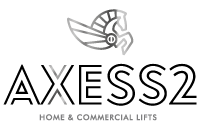There’s no doubt that lift design is always evolving and moving forward. If you look at the advanced design techniques and processes used in modern passenger lifts for example, you can see they are far ahead of those from the past. This is naturally a positive thing because it enables the lifts we use in daily life to be enjoyable to ride in and suitable for all passengers. One crucial factor to think about in terms of lift design is specifying the correct object/surface reflection for the cabin finish. This will ensure that everyone can use the lift and that the building itself is easy to get around. LRV plays a huge role here – but what is it and why is it so important in lifts?
What is LRV in lifts?
LRV stands for Light Reflectance Value and measures how much light a specific colour absorbs and reflects. The LRV scale goes from 0% to 100%, and this makes it easy to see how reflective any colour you finish a lift cabin in is. 0% is taken as totally black, whilst 100% is a stunningly reflective white. On average though, the darkest black has a rating of 5% and the whitest of whites around 85%. For lift designers or those who are needing to fit a lift into a building, it is key to note that some yellow colours can go into the 80% or 90% LRV range too.
Why is LRV important for lifts?
Although we now know what LRV is in terms of lifts, you may still wonder why it is so essential to take into account. In simple terms, it plays a critical role in differentiating between adjacent materials in a lift and making it easier for everyone to use them. This is especially true for those with a visual impairment who need good differentiation between materials to identify parts of the lift properly. While most people can use colour differences for adequate visual contrast, lift users with impaired sight may pick out surfaces by the amount of light they reflect. The bigger the contrast between LRV in lift materials, the easier it is for these people to use the lift itself.
LRV in lifts building regulations
Another reason why LRV in lifts is so important is because it is an official part of building regulations and design guidelines. This means it must be taken into account when fitting a lift into a building. This ensures compliance with Technical Guidance Document Part M 2010, which ensures that the elements within a building pose no risk to those who are visually impaired. It is key, therefore, for lift designers and anyone fitting a lift into a building to look at Part M – General Guidance in building regulations and general requirements for lifting devices in design guidelines to ensure they meet the required criteria. BS 8300-2:2016 is also worth bearing in mind, as this states that lift doors and floors should have a clear contrast visually with their surroundings. For buildings in Scotland, you should refer to the Technical Handbook which states that lift doors, controls and handrails should contrast with surrounding surfaces visually. In terms of dedicated lift standards, passenger lift standards within BS EN BS EN 81-70:2018 state that lifts must be accessible for all, including those with a disability.
Where is LRV most important in a lift?
Lifts are made up of many different parts and LRV comes in useful when distinguishing between them. The examples listed below show the most common times LRV differences can be needed to help with visual contrast: • Call panel needs to stand out from its background • Surfaces/lighting in lift car should minimise light pools, glare and confusing shadows • Floor area outside lift/lift doors should be easily distinguishable from adjacent walls • Control panel should stand out from cabin walls
Get expert guidance from Axess2
Here at Axess2, we understand not only the importance of LRV in lifts but also the required standards it is key to meet in terms of design. If you need more guidance in this area or would like us to fit a lift for you, get in touch on 01200 405005 today.


